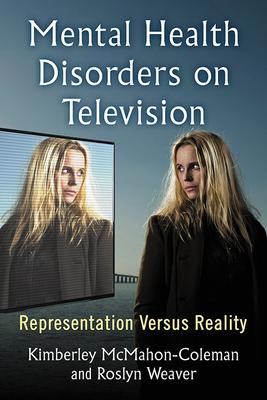In past decades portrayals of mental illness on television were limited to psychotic criminals or comical sidekicks. As public awareness of mental illness has increased so too have its depictions on the small screen. A gradual transition from stereotypes towards more nuanced representations has seen a wide range of lead characters with mental health disorders, including schizophrenia, bipolar disorder, OCD, autism spectrum disorder, dissociative identity disorder, anxiety, depression and PTSD. But what are these portrayals saying about mental health and how closely do they align with real-life experiences? Drawing on interviews with people living with mental illness, this book traces these shifts, placing on-screen depictions in context and demonstrating their real world impacts.
| FindBook |
|
有 1 項符合
mental health disorders on television: representation versus reality的圖書 |
 |
$ 2397 | Mental Health Disorders on Television: Representation Versus Reality
作者:McMahon-Coleman 出版社:McFarland & Company 出版日期:2020-06-04 語言:英文 規格:平裝 / 157頁 / 22.86 x 15.24 x 0.81 cm / 普通級/ 初版  看圖書介紹 看圖書介紹
|
|
|
圖書介紹 - 資料來源:博客來 評分:
圖書名稱:Mental Health Disorders on Television: Representation Versus Reality
內容簡介
作者簡介
Kimberley McMahon-Coleman has a PhD in literature from the University of Wollongong, where she currently works as the Academic Director of Regional Campuses at the University of Wollongong, Australia. Her research interests include the Gothic, Indigenous literature, popular culture, and academic language and learning. Roslyn Weaver has a PhD in literature from the University of Wollongong and completed a postdoctoral fellowship in medical humanities at Western Sydney University. Her research interests include apocalypse, popular culture, children’s literature, and speculative fiction.
|










